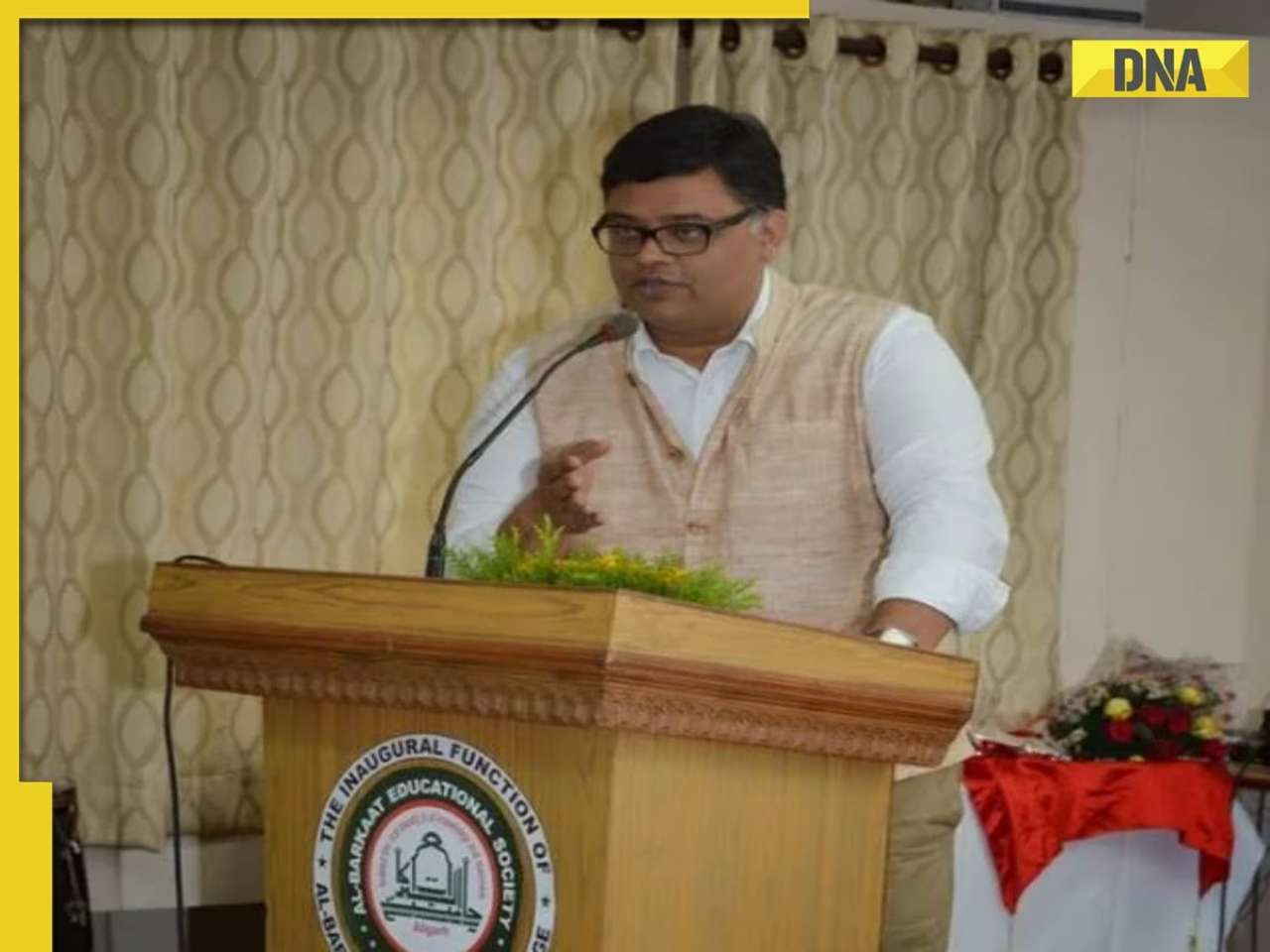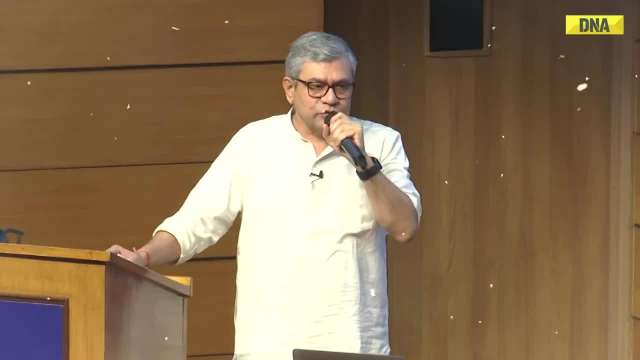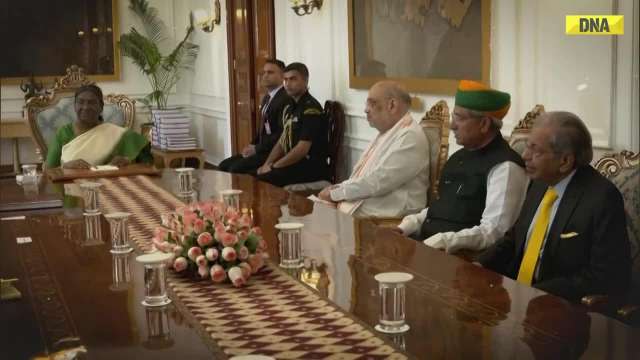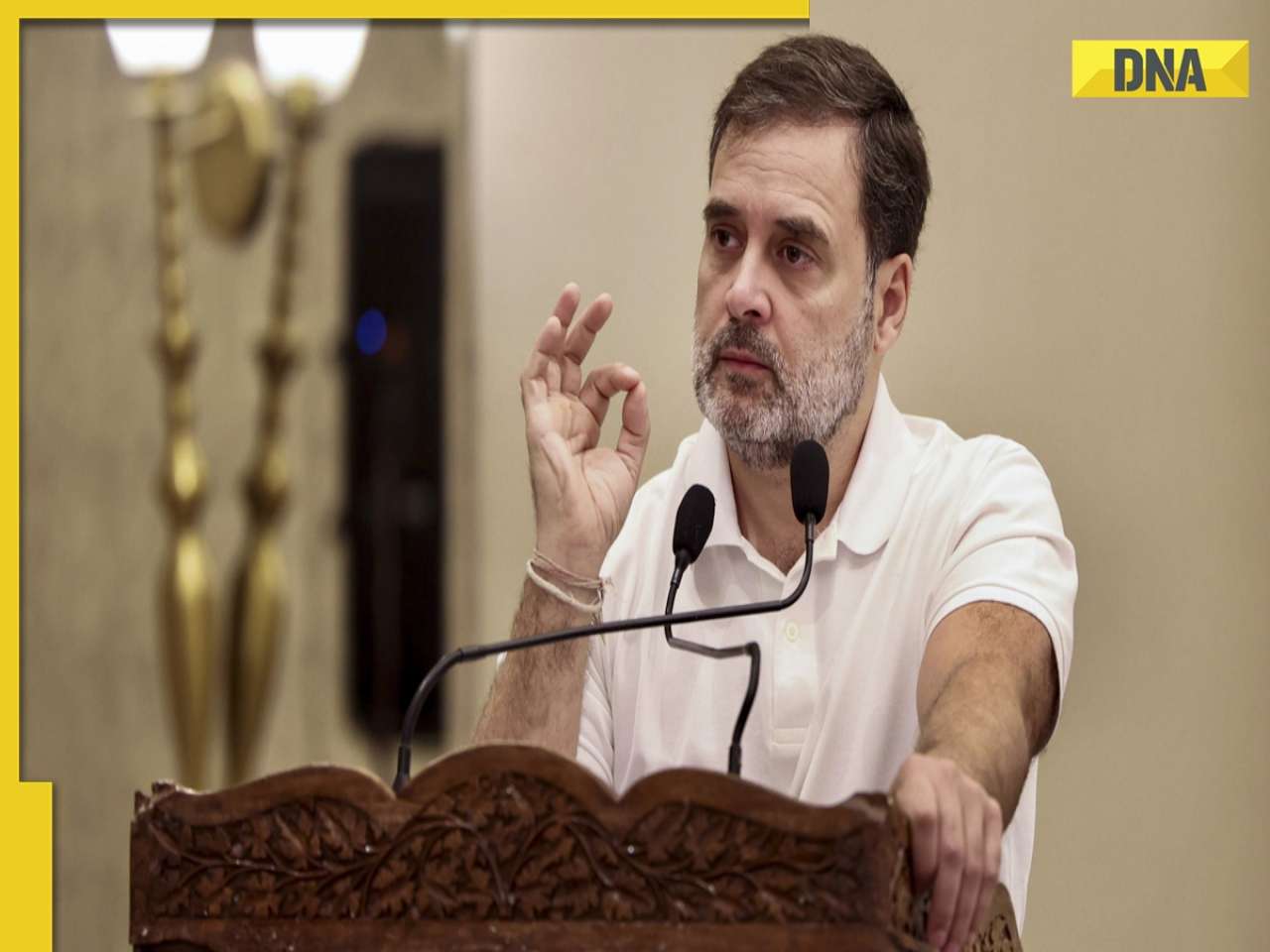The Very Low Frequency (VLF) radar station, slated for completion by 2027, represents a crucial advancement in India’s maritime defence capabilities.
Recent protests by a faction of Damagundam villagers at Indira Park, opposing the Indian Navy's radar station project in Vikarabad, Telangana, have sparked debate. While local voices must always be respected, a deeper examination reveals that these protests are less about genuine community concerns and more about political maneuvering. The real target seems to be a project that is critical for both national security and regional development.
The Strategic Importance of the Vikarabad Radar Station
The Very Low Frequency (VLF) radar station, slated for completion by 2027, represents a crucial advancement in India’s maritime defence capabilities. As only the second such installation in the country, this facility will enhance communication with the Navy’s submarine fleet, playing a pivotal role in national security. With environmental and regulatory clearances secured, the project is also positioned to boost Vikarabad's local economy through infrastructure development and job creation.
Despite these benefits, political interests appear to be exploiting local concerns to obstruct this project, stalling progress that would otherwise bring long-term advantages to the region.
Addressing Environmental Concerns: Facts Over Fear
One of the central arguments of the protesters is the supposed environmental harm the radar station would cause. However, the facts paint a different picture. The Environmental Impact Assessment (EIA) for the project, conducted by an independent agency, met a stringent 16-point compliance framework. This assessment was cleared by an Expert Appraisal Committee under the Ministry of Environment, Forest and Climate Change (MoEF). The project also secured Stage I and Stage II clearances from MoEF in 2017, with the Telangana State Pollution Control Board issuing its consent in the same year.
Importantly, the project stipulates that fewer than 1,000 trees will be felled, while over 50% of the forest land will be preserved to maintain ecological balance—a commitment outlined in a Memorandum of Understanding between the Government of Telangana and the Indian Navy. To further offset the environmental impact, the Navy has already deposited afforestation charges and costs for soil moisture conservation with the forest department. A compulsory afforestation plan is also set to be implemented during the project's execution.
Drawing on the Navy's experience with a similar installation, INS Kattabomman in Tamil Nadu, which has been operational for 34 years, we can confidently dismiss these environmental fears. Far from damaging the local ecosystem, INS Kattabomman has actually enhanced biodiversity, with the green cover flourishing and species such as Bengal foxes, spotted deer, and migratory birds thriving. The Vikarabad station is expected to follow this same sustainable trajectory.
Unfounded Health Concerns
Another concern raised by protestors is the potential health impact of the VLF radar station. However, the operational history of INS Kattabomman again serves as a reassuring case study. In the 34 years since its establishment, there have been no reported health issues among the local population. The fears surrounding health risks in Vikarabad lack scientific backing and seem to be exaggerated to serve political ends rather than genuine community welfare.
Real Benefits for the Vikarabad Community
Far from being a source of harm, the VLF radar station stands to deliver significant benefits to the Vikarabad region. In addition to its strategic defence importance, the project brings with it vital infrastructure improvements. A new road will be built to provide better access to the historic Sri Ramalingeshwara Temple, which lies within the station’s premises. Contrary to concerns, the Indian Navy has guaranteed that full and unrestricted access will be maintained to the temple, ensuring that local traditions remain unaffected.
Moreover, the project includes the construction of a self-sustaining township equipped with schools, hospitals, banks, and markets. This development will improve access to healthcare and education, creating new opportunities for local residents and elevating their quality of life. By opposing this project, politically motivated protests threaten to stall the progress that would benefit thousands of families in the Vikarabad area.
Legal and Regulatory Clearances: A Transparent Process
It is important to note that this project has been in the pipeline for over a decade. Sanctioned by the central government in 2010, the radar station received approval for forest land diversion from the Forest Advisory Council in 2012 after a detailed survey. Since then, it has complied with all legal and environmental regulations, with clearances being granted by MoEF and the Telangana State Pollution Control Board in 2017.
A Public Interest Litigation (PIL) filed in 2020 temporarily delayed the project, but the Telangana High Court vacated the stay in January 2024, allowing the project to proceed without further legal hindrances. These facts underscore the transparent and lawful manner in which the project has been handled, further undermining the credibility of the protests.
A Vision for Progress Sabotaged by Political Agendas
The protests against the VLF radar station, while receiving media attention, should be viewed critically. Behind the environmental and health concerns lies a politically motivated agenda designed to halt a project that promises to balance national security needs with local development and environmental sustainability.
The Indian Navy’s track record with projects like INS Kattabomman demonstrates that strategic installations can coexist harmoniously with nature while fostering regional growth. The Vikarabad radar station is no different. It is poised to transform the region by creating jobs, enhancing infrastructure, and safeguarding both the environment and the community’s future.
The VLF radar station is not just a defence project—it represents a shared vision for progress and sustainability. Those opposing it, under the guise of environmental and health concerns, are jeopardizing the long-term interests of Vikarabad’s residents. The project deserves full support for the security and prosperity it will bring to both the nation and the local community.
(The author of this article is a Defence, Aerospace & Political Analyst based in Bengaluru. He is also Director of ADD Engineering Components, India, Pvt. Ltd, a subsidiary of ADD Engineering GmbH, Germany. You can reach him at: girishlinganna@gmail.com)
(Disclaimer: The views expressed above are the author's own and do not reflect those of DNA)
![submenu-img]() 'Soye hai sab log': Skipper Rohit Sharma fumes at teammate during 1st India vs Bangladesh Test
'Soye hai sab log': Skipper Rohit Sharma fumes at teammate during 1st India vs Bangladesh Test![submenu-img]() Delhi Capitals confirm Rishabh Pant as their top retention for IPL 2025: Report
Delhi Capitals confirm Rishabh Pant as their top retention for IPL 2025: Report![submenu-img]() Moon and Venus Orbiter Journeys, Space Station, Gaganyaan Mission
Moon and Venus Orbiter Journeys, Space Station, Gaganyaan Mission![submenu-img]() 'So much tension and stress...': Father of EY Employee who died of 'overwork'
'So much tension and stress...': Father of EY Employee who died of 'overwork'![submenu-img]() Watch: Shubman Gill's father gives priceless reaction to his son's exceptional century in Chennai Test
Watch: Shubman Gill's father gives priceless reaction to his son's exceptional century in Chennai Test![submenu-img]() Maharashtra Elections 2024: महाराष्ट्र में चुनाव से पहले महायुति में संग्राम, अठावले की 10-12 सीटों की मांग
Maharashtra Elections 2024: महाराष्ट्र में चुनाव से पहले महायुति में संग्राम, अठावले की 10-12 सीटों की मांग![submenu-img]() जंतर-मंतर से RSS पर Arvind Kejriwal ने दागे 5 सवाल, '75 साल में रिटायर होने वाला नियम मोदीजी पर लागू होगा?'
जंतर-मंतर से RSS पर Arvind Kejriwal ने दागे 5 सवाल, '75 साल में रिटायर होने वाला नियम मोदीजी पर लागू होगा?'![submenu-img]() Haryana Elections 2024: हरियाणा में CM Yogi की दो टूक, 'दंगा करने वालों की 7 पुश्तों की कमाई होगी जब्त'
Haryana Elections 2024: हरियाणा में CM Yogi की दो टूक, 'दंगा करने वालों की 7 पुश्तों की कमाई होगी जब्त'![submenu-img]() Devara Release Trailer: खून से लाल समंदर में लगा लाशों का ढेर, भैरा और देवरा बने जानी दुश्मन, हैरान कर देगा JR.NTR का अंदाज
Devara Release Trailer: खून से लाल समंदर में लगा लाशों का ढेर, भैरा और देवरा बने जानी दुश्मन, हैरान कर देगा JR.NTR का अंदाज![submenu-img]() बिहार सरकार का युवाओं को दिवाली तोहफा, पुलिस महकमे में होने वाली है बंपर भर्ती
बिहार सरकार का युवाओं को दिवाली तोहफा, पुलिस महकमे में होने वाली है बंपर भर्ती![submenu-img]() Ford to return to India after 2 years with reopening of....
Ford to return to India after 2 years with reopening of....![submenu-img]() Maruti Suzuki launches new Swift CNG, check price, mileage, other features
Maruti Suzuki launches new Swift CNG, check price, mileage, other features![submenu-img]() ‘30 LPA, 3BHK, no in-laws’: Woman earning Rs 1.32 lakh salary lists demands for future husband, netizens say...
‘30 LPA, 3BHK, no in-laws’: Woman earning Rs 1.32 lakh salary lists demands for future husband, netizens say...![submenu-img]() In a big EV push, Centre launches Rs 10900 crore PM E-Drive scheme to replace…
In a big EV push, Centre launches Rs 10900 crore PM E-Drive scheme to replace…![submenu-img]() World’s longest car has helipad, swimming pool, mini-golf course, can seat over…; it cost…
World’s longest car has helipad, swimming pool, mini-golf course, can seat over…; it cost…![submenu-img]() Meet boy, who cleared JEE Advanced with AIR 99, then dropped out of IIT counselling due to...
Meet boy, who cleared JEE Advanced with AIR 99, then dropped out of IIT counselling due to...![submenu-img]() Meet man, IIT graduate who was hired at Rs 100 crore salary but was fired within a year, he is now...
Meet man, IIT graduate who was hired at Rs 100 crore salary but was fired within a year, he is now...![submenu-img]() Meet man who passed JEE Advanced with AIR 1, completed B.Tech from IIT Bombay, is now pursuing…
Meet man who passed JEE Advanced with AIR 1, completed B.Tech from IIT Bombay, is now pursuing…![submenu-img]() Meet man, whose father's death encouraged him to quit IAS job, create multi-crore company, he is...
Meet man, whose father's death encouraged him to quit IAS job, create multi-crore company, he is...![submenu-img]() Meet woman, who scored 97% in class 12, secured 705 out of 720 marks in NEET exam, her AIR is...
Meet woman, who scored 97% in class 12, secured 705 out of 720 marks in NEET exam, her AIR is...![submenu-img]() Congress President Kharge Slams & Opposes 'One Nation, One Election' Proposal, Calls It Impractical
Congress President Kharge Slams & Opposes 'One Nation, One Election' Proposal, Calls It Impractical![submenu-img]() Why 'One Nation One Election' Is important? Ashwini Vaishnaw Explains After It Gets Cabinet Approval
Why 'One Nation One Election' Is important? Ashwini Vaishnaw Explains After It Gets Cabinet Approval![submenu-img]() Jammu Kashmir Assembly Election 2024 Phase 1 Highlights: What Happened In First phase In J&K Polls?
Jammu Kashmir Assembly Election 2024 Phase 1 Highlights: What Happened In First phase In J&K Polls?![submenu-img]() One Nation One Election: Centre Clears Proposal, Bill To Be Introduced In Winter Session | Modi 3.0
One Nation One Election: Centre Clears Proposal, Bill To Be Introduced In Winter Session | Modi 3.0![submenu-img]() Haryana Elections 2024: Is BJP Set To Lose In Haryana? Anti-Incumbency And Other Factors Analysed
Haryana Elections 2024: Is BJP Set To Lose In Haryana? Anti-Incumbency And Other Factors Analysed![submenu-img]() This country once ruled half of the world, now is in 100% debt, here are other developed nations facing similar issue
This country once ruled half of the world, now is in 100% debt, here are other developed nations facing similar issue![submenu-img]() Meet Mukesh Ambani, Ratan Tata's competitor, who runs business worth Rs 70000000000, she is...
Meet Mukesh Ambani, Ratan Tata's competitor, who runs business worth Rs 70000000000, she is...![submenu-img]() Revised LTC rules: Air travel relaxation, new changes in travelling perks for THESE govt employees, check details
Revised LTC rules: Air travel relaxation, new changes in travelling perks for THESE govt employees, check details![submenu-img]() Meet woman, richer than superstar husband who charges Rs 100 crore per film, her net worth is Rs...
Meet woman, richer than superstar husband who charges Rs 100 crore per film, her net worth is Rs...![submenu-img]() Billionaire Mark Cuban says he would buy X 'in a heartbeat', Elon Musk's cheeky response goes viral
Billionaire Mark Cuban says he would buy X 'in a heartbeat', Elon Musk's cheeky response goes viral![submenu-img]() NASA Nebula: 5 mesmerising images of Red Spider, Crab, Orian Nebulae captured by NASA's Hubble Telescope
NASA Nebula: 5 mesmerising images of Red Spider, Crab, Orian Nebulae captured by NASA's Hubble Telescope![submenu-img]() 5 best places to visit in India this October
5 best places to visit in India this October![submenu-img]() This film rejected by Rajesh Khanna made Feroz Khan a superstar, was delayed for a year, superstar had to..
This film rejected by Rajesh Khanna made Feroz Khan a superstar, was delayed for a year, superstar had to..![submenu-img]() Meet Sridevi’s ‘daughter’, one of Pakistan’s highest-paid actresses, who is likely to star opposite Prabhas in...
Meet Sridevi’s ‘daughter’, one of Pakistan’s highest-paid actresses, who is likely to star opposite Prabhas in...![submenu-img]() 7 foods named after Indian cities
7 foods named after Indian cities![submenu-img]() Moon and Venus Orbiter Journeys, Space Station, Gaganyaan Mission
Moon and Venus Orbiter Journeys, Space Station, Gaganyaan Mission![submenu-img]() 'So much tension and stress...': Father of EY Employee who died of 'overwork'
'So much tension and stress...': Father of EY Employee who died of 'overwork'![submenu-img]() 'Stopped road works, medicines, garbage collection....': Delhi CM Atishi hits out at BJP, vows to resume all work
'Stopped road works, medicines, garbage collection....': Delhi CM Atishi hits out at BJP, vows to resume all work![submenu-img]() Tirupati laddu row: Temple trust's big assurance to devotees amid ‘beef tallow’ in prasadam, says 'divinity, purity of..
Tirupati laddu row: Temple trust's big assurance to devotees amid ‘beef tallow’ in prasadam, says 'divinity, purity of..![submenu-img]() 'BJP spreading lies, desperate to...': Rahul Gandhi breaks silence on his Sikh remark in US
'BJP spreading lies, desperate to...': Rahul Gandhi breaks silence on his Sikh remark in US












































)
)
)
)
)
)
)
)
)
)
)
)
)
)
)





)
)
)
)
)
)